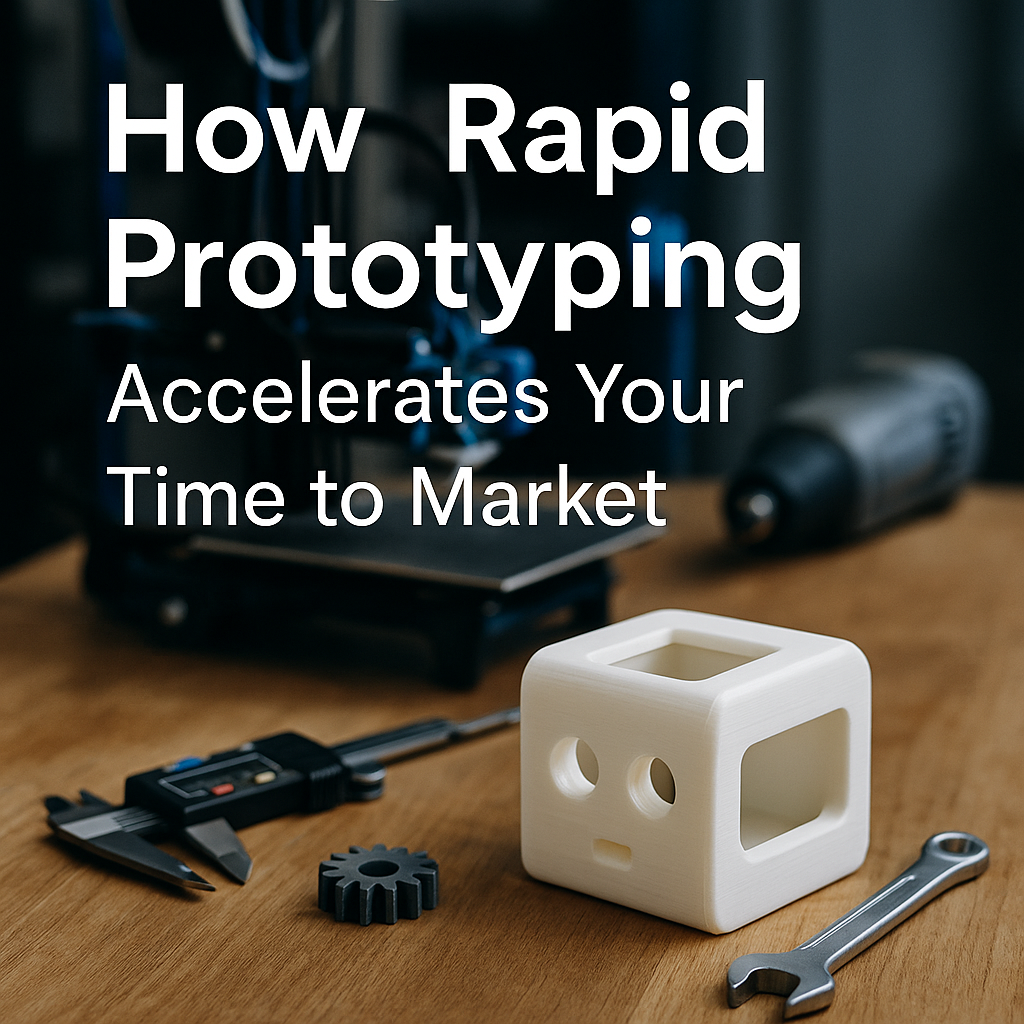
In today’s fiercely competitive product development environment, speed is often the ultimate advantage. The faster you can bring your concept to life, test it, iterate, and launch, the greater your chances of success. Rapid prototyping has emerged as a vital tool for companies looking to shorten their product development cycles without compromising quality. It provides physical models in days—not weeks—allowing for faster testing, decision-making, and innovation.
One company at the forefront of this movement is Boona Prototypes, a trusted partner for rapid prototyping, CNC machining, and low-volume production services.
I. What is Rapid Prototyping?
Rapid prototyping is a manufacturing technique that converts digital designs into physical objects quickly and cost-effectively. It allows designers and engineers to validate concepts, test functionality, and accelerate improvements—all before full-scale production.
At Boona Prototypes, rapid prototyping includes processes such as 3D printing (SLA, SLS, SLM), CNC machining, vacuum casting, and sheet metal fabrication. With in-house equipment and a broad range of material options, Boona delivers prototypes in as little as 3 business days.
II. How It Speeds Up Time to Market
| Key Benefit | Description |
|---|---|
| Fast Turnaround | Boona Prototypes delivers parts within 3-5 business days, reducing downtime between phases. |
| Early Error Detection | Functional prototypes expose flaws early, avoiding costly revisions in later production stages. |
| Reduced Tooling Investment | No need for expensive steel molds during the development stage. |
| Flexibility in Iteration | Engineers can test multiple versions simultaneously with different materials and finishes. |
| Integrated Services | Boona offers design feedback, machining, finishing, and low-volume runs under one roof. |
III. Process Comparison Table
To better understand how different rapid prototyping methods impact lead time and product development, here’s a comparison of Boona’s core services:
| Process | Lead Time | Accuracy | Suitable Materials | Typical Applications |
|---|---|---|---|---|
| SLA 3D Printing | 2–3 days | ±0.05 mm | Resin | High-detail visual models, fit/form testing |
| CNC Machining | 3–5 days | ±0.02 mm | Plastics, Aluminum, Steel | Functional parts, high-precision components |
| Vacuum Casting | 5–7 days | ±0.1 mm | PU, ABS-like resins | Low-volume production, rigid or flexible parts |
| Sheet Metal Fabrication | 5–7 days | ±0.1–0.2 mm | Aluminum, Stainless Steel | Enclosures, brackets, flat parts |
Learn more about the technical specs and options on Boona’s rapid prototyping page.
IV. From Prototype to Production: A Seamless Transition
One major advantage of working with Boona Prototypes is their ability to scale your prototype into short-run production seamlessly. Once your prototype is validated, Boona can help you move directly into low-volume manufacturing, injection molding, or custom tooling. This avoids delays caused by switching vendors or re-quoting projects.
With this one-stop solution, your project stays on schedule and within budget.
V. Engineering Support and Collaboration
Time to market isn’t just about manufacturing speed—it’s also about smart decision-making. Boona’s experienced engineering team offers design-for-manufacturing (DFM) reviews, material suggestions, and feedback to ensure your parts are both functional and efficient.
This collaborative approach enables more confident product launches and reduces the risk of late-stage design changes.
VI. Case Example: Iterative Testing with CNC and SLA
A startup medical device company worked with Boona Prototypes to develop an enclosure for a handheld device. Within two weeks:
-
Three different prototype versions were produced using SLA 3D printing.
-
The final version was tested using CNC aluminum machining for strength validation.
-
Boona supported the project with fast iterations and material comparisons, helping the client meet investor demo deadlines.
Conclusion: Accelerate Your Next Launch
Rapid prototyping isn’t just a tool—it’s a strategic advantage. Whether you’re a startup or an enterprise, working with a capable partner like Boona Prototypes can significantly reduce your product development cycle, improve your design accuracy, and get your innovations into the market ahead of the competition.
If you’re looking for reliable, fast, and high-quality prototyping services, explore Boona’s offerings or request a quote today.
FAQs
1. What is rapid prototyping?
Rapid prototyping is a manufacturing method that quickly creates physical models from digital designs using techniques like 3D printing, CNC machining, and vacuum casting. It enables fast iteration, functional testing, and product validation before mass production.
2. How does rapid prototyping reduce time to market?
It shortens development cycles by allowing faster design validation, earlier identification of flaws, and fewer delays. Manufacturers like Boona Prototypes offer prototypes in as little as 3 days, accelerating launch timelines.
3. What industries benefit most from rapid prototyping?
Industries like automotive, medical devices, electronics, consumer products, and aerospace benefit the most due to the need for frequent design iterations and rapid testing cycles.
4. What are the most common rapid prototyping technologies?
-
SLA (Stereolithography)
-
SLS (Selective Laser Sintering)
-
CNC machining
-
Vacuum casting
-
Sheet metal fabrication
Boona Prototypes offers all of these in-house.
5. How accurate are rapid prototypes?
Accuracy depends on the process:
-
CNC machining: ±0.02 mm
-
SLA 3D printing: ±0.05 mm
-
Vacuum casting: ±0.1 mm
See the full capabilities on Boona’s service page.
6. Can I use rapid prototypes for functional testing?
Yes. Functional prototypes made using CNC machining or vacuum casting are strong enough for mechanical and usability testing. Boona also offers material options that mimic production-level performance.
7. What’s the typical turnaround time for a prototype?
Most prototypes can be delivered within 3 to 5 business days, depending on complexity, material, and finishing requirements.
8. How do I choose between 3D printing and CNC machining?
-
Use 3D printing for complex shapes, visual models, and fast iterations.
-
Use CNC machining for precise, functional parts with high strength.
Boona’s team can help you decide during the quote process.
9. Is rapid prototyping cost-effective for small businesses?
Yes. Because there’s no need for expensive tooling or molds, it’s perfect for startups or small runs. Boona offers flexible pricing and low minimum order quantities.
10. Can Boona Prototypes scale my design to low-volume production?
Absolutely. Boona provides a one-stop service from prototype to low-volume production, ensuring continuity in design, quality, and lead time.



